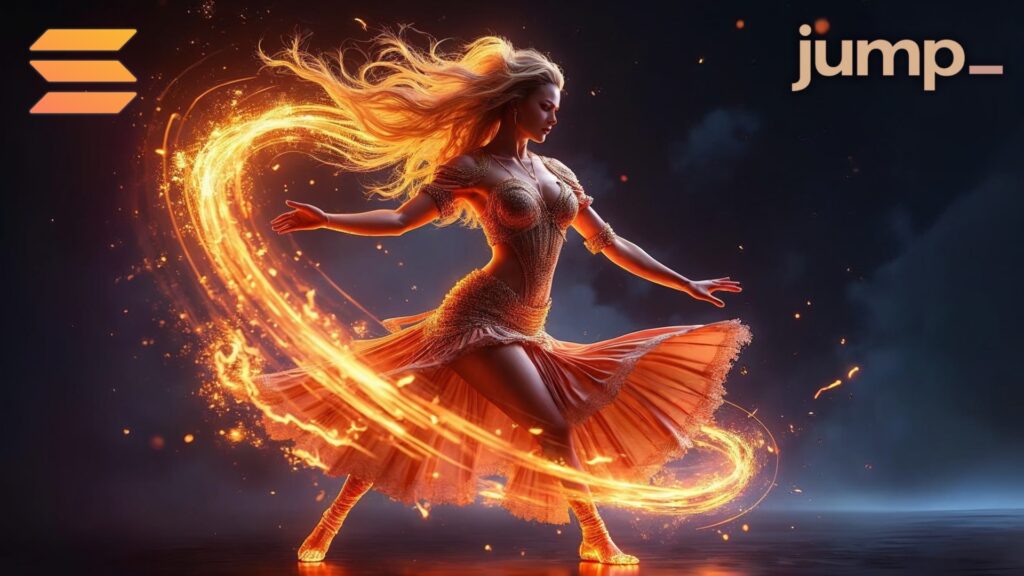Podcast Discussion: Deep Dive Into This Article.
At Breakpoint 2024, Solana showcased some ground-breaking updates that could redefine the landscape of blockchain technology, with Firedancer, the new validator client built by Jump Crypto, taking centre stage. Firedancer promises to push Solana’s performance to unprecedented levels, bringing with it a host of improvements in scalability, security, and overall network resilience. This article dives into why Firedancer is poised to be a game-changer, integrating key highlights from Breakpoint 2024 and drawing parallels with advanced AI processing techniques.
1. Breakpoint 2024: A Showcase of Innovation
Firedancer made headlines during Solana Breakpoint 2024 for its record-breaking transaction processing speeds. During live demonstrations, Firedancer achieved an astonishing 1 million transactions per second (TPS), shattering previous performance benchmarks (YouTube)(Flagship Portfolios). This level of scalability is crucial for handling Solana’s growing network activity, particularly as it garners increasing adoption from major players like Visa and PayPal.
Another key update was the introduction of non-consensus transactions, which enable the network to process transactions without overloading the core consensus process. This advancement further enhances Solana’s ability to handle high volumes of transactions without compromising security, offering a level of efficiency that has been largely unmatched in the blockchain space (SolanaFloor).
2. Firedancer’s Performance Edge
At its core, Firedancer is a complete reimplementation of Solana’s validator client, built from the ground up using the C programming language. It is designed to eliminate software inefficiencies that limit current validators, allowing Solana to scale in line with hardware advancements. By using a modular, tile-based architecture, Firedancer distributes the workload across different processes, making it possible to isolate failures and handle tasks concurrently. This separation of processes optimizes performance, ensuring each component can operate at maximum efficiency and is designed to be more resilient and less likely to request a network halt when issues arise. This is thanks to its robust architecture and advanced error handling. (Helius)(Solana Compass).
3. Parallel Processing: A Comparison with AI and CUDA Cores
Firedancer’s design shares striking similarities with how CUDA cores in GPUs (Graphics Processing Units) handle parallel processing in AI tasks. CUDA cores break down complex computations into smaller tasks, processing them simultaneously to boost efficiency—especially in AI training where thousands of operations need to be completed at once. Firedancer takes a similar approach by splitting its processes into tiles, each handling a specific task, like processing incoming transactions or validating signatures (Helius).
This parallel processing model ensures that Firedancer can maintain high throughput, even during periods of peak network activity. Much like how GPUs optimize for performance in AI by leveraging multiple cores, Firedancer utilizes NUMA-aware architecture to optimize resource allocation across CPU cores, allowing Solana’s validators to handle higher transaction volumes (Solana Compass).
4. A Path Toward True Decentralization
One of the standout advantages of Firedancer is its ability to increase validator diversity on Solana. Currently, over 68% of Solana’s network relies on a single client (Solana Labs), posing a risk to decentralization. Firedancer introduces a completely independent validator client, enhancing security and reducing the potential for a network-wide failure (Flagship Portfolios)(Solana Compass). By decentralizing the validator ecosystem, Solana can operate more securely, with a lower likelihood of being impacted by bugs or vulnerabilities in a single client.
5. Future-Proofing Solana for Institutional Adoption
The updates demonstrated at Breakpoint 2024, particularly Firedancer’s performance improvements and validator diversity, signal that Solana is positioning itself to attract more institutional players. Visa’s integration with Solana for USDC transactions is just one example of the growing institutional interest in the network. As Solana becomes more attractive to enterprises looking for reliable, scalable, and cost-effective blockchain solutions, Firedancer will be a critical tool for maintaining its competitive edge (Solana Compass).
Why Firedancer Can Avoid Network Halts
Firedancer’s modular architecture enables it to handle issues without halting the entire Solana network. Unlike the current validator, which operates monolithically and may require a network halt during major issues, Firedancer breaks tasks into independent “tiles.” This separation isolates problems to specific components, allowing other processes to continue uninterrupted. Additionally, Firedancer can upgrade or fix parts of the system on the fly without downtime, maintaining overall network stability while resolving errors (Helius)(Solana Compass).
By localizing failures and managing dynamic rerouting, Firedancer prevents network-wide disruptions, ensuring smoother performance.
Conclusion: A Technological Leap for Solana
Firedancer represents more than just an upgrade—it’s a complete rethinking of how Solana can scale and secure its network for the future. With its parallel processing architecture, low-latency design, and ability to handle over 1 million TPS, Firedancer is set to revolutionize the blockchain ecosystem. As more updates roll out over the coming year, the combination of Firedancer’s performance improvements and Solana’s ongoing adoption by major financial players like Visa and PayPal will make 2024 a defining year for blockchain innovation.
Disclaimer: This article reflects opinions based on available information up to September 22, 2024. It is not intended to provide financial advice. Please conduct further research or consult with a financial advisor before making investment decisions.
